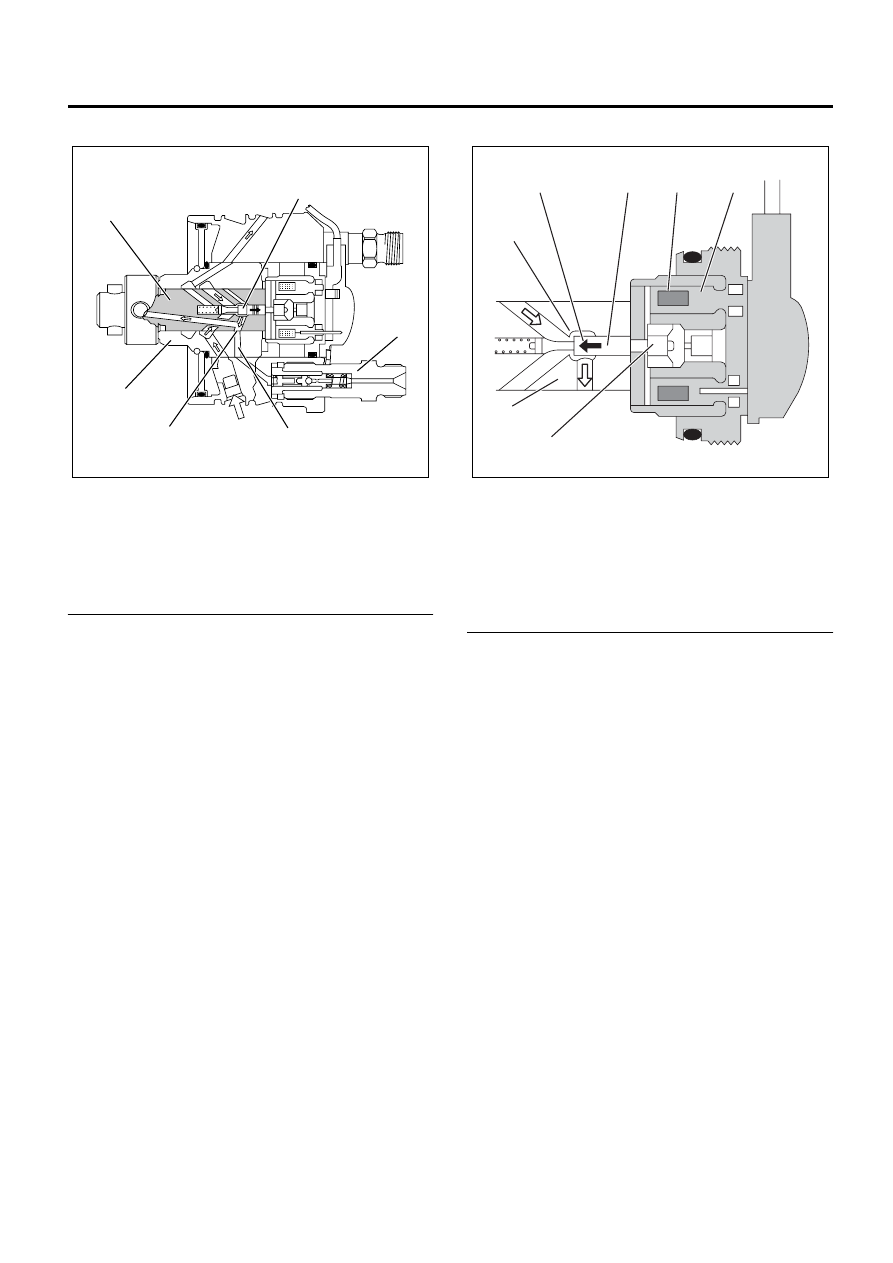Isuzu N-Series. Service manual - part 802

Engine Control System (4JH1) 6E-259
Distributor Head
Legend
1. Rotor Shaft
2. Valve Needle
3. Constant Pressure Valve (CPV) Holder
4. High Pressure Outlet
5. Distributor Shaft
6. Barrel
The distributor head distribute the high pressure fuel
that has flowed through the rotating rotor shaft’s
distributor slits and the barrel’s high pressure outlets (4
cylinders) to the engine cylinders via the constant
pressure valve (CPV) and the nozzle holder
assemblies. The fuel injection solenoid valve needle
changes the passage to the radial plunger high
pressure pump between fuel suction and fuel
compression.
Fuel Injection Solenoid Valve
Legend
1. Valve Seat
2. Valve Closing Direction
3. Valve Needle
4. Coil
5. Magnet
6. Magnet Anchor
7. Rotor Shaft
The fuel injection solenoid valve consists of a valve
seat, a valve needle, and a magnet anchor (a movable
iron core), a coil and a magnet. The valve needle
rotates together with the rotor shaft. When current
controlled by the fuel injection pump control unit (PCU)
flows to the coil, the magnet anchor and the valve
needle are pushed towards the valve seat. When the
valve seat is completely closed by the valve needle, the
fuel in the high pressure passage is isolated from the
low pressure passage, is compressed by the radial
plunger high pressure pump, and injected into the
engine cylinder through the nozzle holder assembly.
When the required injection quantity is reached, the
current to the coil is cut, the valve seat opens and
injection of fuel is completed.
1
2
3
4
5
6
N6A3848E
1
2
3
4
5
7
6
N6A3849E